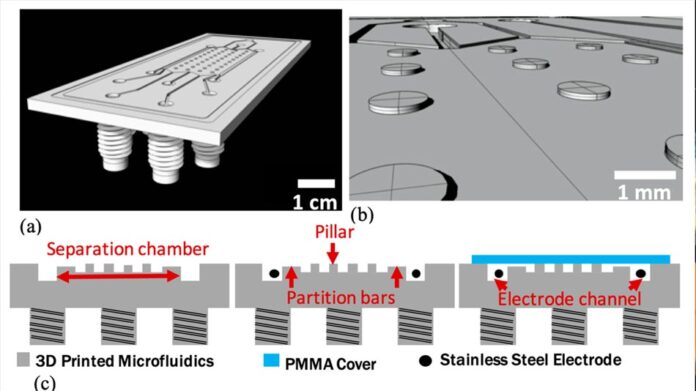Table of Contents
In the vast landscape of scientific innovation, one field is emerging as a veritable giant – nanomaterial printing. By marrying the vast potential of nanotechnology with the finesse of additive manufacturing, nanomaterial printing is carving a path toward a future of limitless possibilities.
The Science Behind Nanomaterial Printing
Fundamentally, nanomaterial printing involves utilizing sophisticated printers to construct intricate structures at the nanoscale (1 to 100 nanometers), leveraging the distinctive properties of materials at this site.
The promise of nanomaterial printing lies in its unique benefits:
- Unrivaled Precision: The ability to build complex structures with nanometric accuracy offers unmatched levels of detail and customization.
- Augmented Material Qualities: Materials at the nanoscale can demonstrate exceptional optical, mechanical, and electrical properties, opening new doors to innovative, high-performance products.
- Resource Efficiency and Sustainability: Nanomaterial printing maximizes resource use, minimizes waste, and provides a greener alternative to traditional manufacturing processes.
Disrupting Industries Through Nanomaterial Printing
The potential implications of nanomaterial printing extend across various sectors. Here’s a snapshot of a few:
Healthcare
Nanomaterial printing carries the significant potential to reshape healthcare, with possibilities ranging from customized drug delivery systems to regenerative medicine and advanced diagnostic tools. For example, nanoscale biosensors could enable real-time patient monitoring and early disease detection.
Electronics
In the realm of electronics, nanomaterial printing could be a breakthrough, facilitating the creation of compact, high-efficiency semiconductors, sensors, and other components. This could signal the dawn of an era of energy-efficient, high-performance electronic devices.
Renewable energy
Nanomaterial printing could affect a major shift in the renewable energy sector, specifically solar power. The production of nanostructured solar cells could greatly boost the efficiency of solar energy capture, pushing us toward a cleaner future.
Powering space exploration: a new frontier
Beyond the realms of our Earth-bound industries, nanomaterial printing is making waves in an even more ambitious field – space exploration. It has the potential to revolutionize how we approach this final frontier.
The use of nanomaterials could lead to the development of lighter and more energy-efficient spacecraft, which are easier to launch and require less fuel. This makes space travel more cost-effective and accessible. Moreover, advanced materials with increased resilience to harsh space conditions could drastically extend the operational lifetime of spacecraft.
Navigating hurdles: the future of nanomaterial printing
As with any frontier technology, nanomaterial printing has its hurdles to overcome. These include scalability, quality control, and the requirement for advanced characterization techniques. Moreover, it is vital to address the environmental and health concerns associated with nanomaterials.
Despite these challenges, continued research and investment in this domain are poised to smooth out these rough edges, leading to wider adoption of nanomaterial printing. As our knowledge of nanoscale phenomena grows, we can expect the applications and impact of nanomaterial printing to multiply.
In the tapestry of technological progress, nanomaterial printing marks a seismic shift. It’s not just about industrial transformation – it’s about redefining what’s achievable. As we delve deeper into the minuscule. We uncover the enormous potential of the tiny, leading us toward a future defined by precision, personalization, and sustainability.
See more: https://xtpl.com/products/nanoinks/














